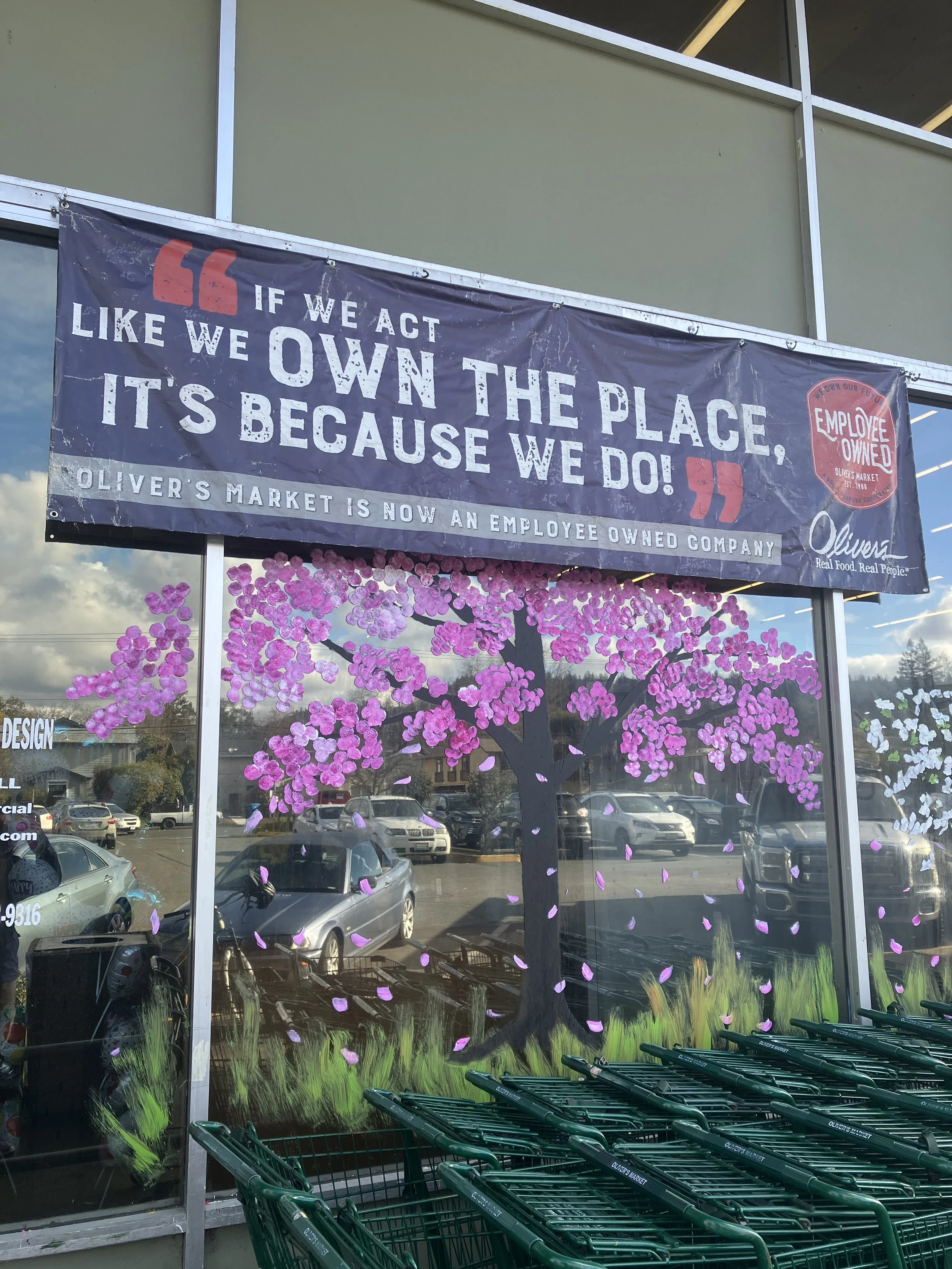Workplace democracy
By Evan Jackson, staff writer
When you go to Oliver’s Market you might see employees wearing their signature “If we act like we own the place it’s because we do!” shirts. And that’s because unlike most companies in the U.S., Oliver's uses a system of worker democracy to give their employees ownership of the business that prints their checks.
Worker democracy is the concept of having companies and businesses owned and run by workers through a democratic system, usually involving workers having the ability to vote on company decisions or elect their leadership. In a traditional company, the owner and management are separate from the workers. These traditional companies are organized hierarchically and are governed autocratically. Managers are only accountable to those above them, all the way to the CEO, if there is one. Owners and managers are able to use their power under the traditional system to benefit their own interests at the expense of those lower on the hierarchy. This can be seen in, among other things, the vast gaps in pay between the CEOs of companies and those companies' average workers. In 2020, the difference in earnings between CEOs and the average worker was 670-1.
If traditional companies are organized like a monarchy or a dictatorship, with power flowing from the top down, then a worker democracy is organized like a democracy or a republic. The power flows from the workers up. By organizing our workplaces democratically we help bring about a more democratic society. “[You] can’t have a democracy in the large society if you don't have a democracy in the workplace because that is where people spend most of their waking hours,” says Erik Olson Fernandez, California Teachers Association union representative.
There are many different ways in which worker democracy can be implemented in a company. Worker Cooperatives are firms that are owned by and managed democratically by their workers. These are not to be confused with consumer cooperatives like credit unions, which are owned by the consumers. In the U.S. worker co-ops are rare, with only 7,000 people employed in them in the country. Most of the good examples of this type of co-ops being implemented are overseas in places which are more culturally and politically friendly to this type of firm. Another form is Employee Stock Ownership Firms (ESOP), such as Oliver's Market locally. ESOP companies give voting shares to their employees, allowing them to exercise some power over the company. Unions can also allow workers to introduce an element of democracy into the workplace.
Workplace democracy provides a variety of benefits. Worker Co-ops are more resilient than traditional companies. A study of Uruguayan firms found that worker-managed firms were 29% less likely to be dissolved. There have been similar findings in other studies, such as one of co-ops in Alberta which found that co-ops had a substantially higher three year survival rate, of 81.5% compared to 48% for conventional firms.
A common argument against worker cooperatives and employee ownership is that these types of firms do not perform as well. However, this argument does not appear to have any basis in reality. Studies have also found that worker co-ops have similar or greater productivity than conventional firms. A study of thousands of French worker managed firms found they were as productive or more productive than conventional firms. Anda meta-analysis study that covered 56,948 firms found that employee ownership had a slight positive relationship with firm performance.
Co-ops have also been found to be better for the well-being and satisfaction of workers. A study in Italy found that cooperatives increase social trust. While a study of German workers found that autonomy in the workplace plays an important role in worker well-being.
There are many examples of successful co-ops internationally. The Mondragon Corporation in Spain is one such example. It is made up of 95 cooperatives with 80,000 people. It serves as a good example of cooperatives at a large scale.
In contrast to the centralized network of Mondragon, the Emilia Romagna region of Northern Italy has a thriving network of co-ops, with two-thirds of the population being members and co-ops produce 30% of the region's GDP. The formation of this sort of cooperative economy is due to favorable legislation that makes it easier to form co-ops. One example is legislation that requires existing Italian co-ops to put 3% of profits into a development fund for new co-ops.
There are many things we can do right now to advance worker democracy in the U.S. This includes policies that could currently be implemented to encourage the formation of co-ops. The Marcora Law is an Italian law that allows workers to buy out failing companies using their unemployment benefits. If implemented in the U.S. a law like this could help prevent job losses during economic downturns and allow co-ops to be created from existing business without the need to raise capital.
Tax incentives and grants could also be created to encourage the formation of co-ops. Funding is a major hurdle for forming new co-ops, since they are often unable to use traditional sources of funding like selling shares. Taxes could be reduced for new and existing co-ops, while government funding could be made available to secure the capital to create new ones.
You can help by supporting local cooperative businesses and unionization efforts. Unions are a major first step towards implementing democracy in the workplace. “Most of the workers would like to be in unions, but the system is set up against that,” says Fernandez. “The main thing is to seek to unionize your own workplace.”

